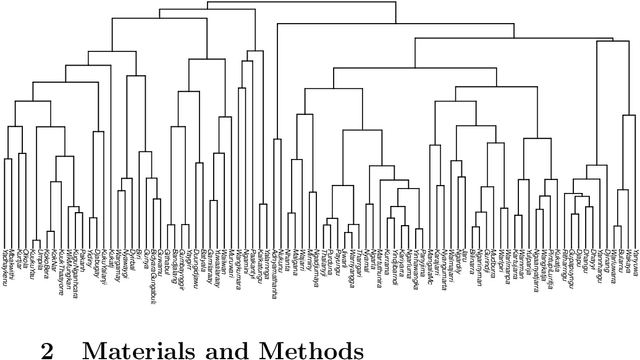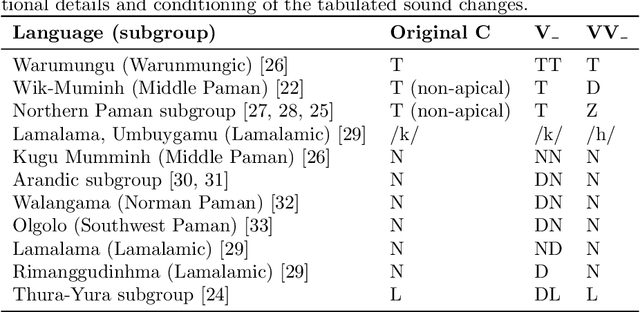Evolution and trade-off dynamics of functional load
Paper and Code
Dec 22, 2021



Function Load (FL) quantifies the contributions by phonological contrasts to distinctions made across the lexicon. Previous research has linked particularly low values of FL to sound change. Here we broaden the scope of enquiry into FL, to its evolution at all values. We apply phylogenetic methods to examine the diachronic evolution of FL across 90 languages of the Pama-Nyungan (PN) family of Australia. We find a high degree of phylogenetic signal in FL. Though phylogenetic signal has been reported for phonological structures, such as phonotactics, its detection in measures of phonological function is novel. We also find a significant, negative correlation between the FL of vowel length and of the following consonant, that is, a deep-time historical trade-off dynamic, which we relate to known allophony in modern PN languages and compensatory sound changes in their past. The finding reveals a historical dynamic, similar to transphonologization, which we characterize as a flow of contrastiveness between subsystems of the phonology. Recurring across a language family which spans a whole continent and many millennia of time depth, our finding provides one of the most compelling examples yet of Sapir's 'drift' hypothesis, of non-accidentally parallel development in historically related languages.
 Add to Chrome
Add to Chrome Add to Firefox
Add to Firefox Add to Edge
Add to Edge